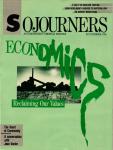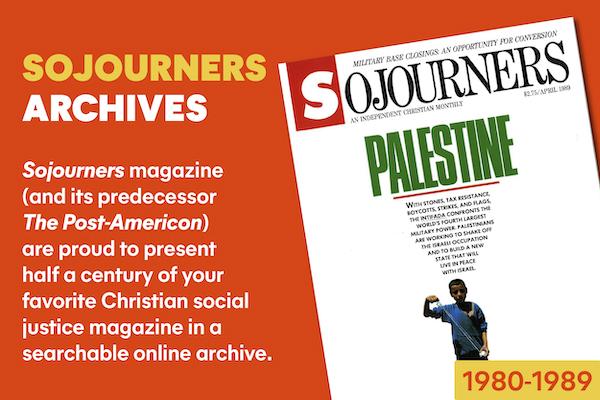Every 11 days since 1945, a nuclear weapon has been exploded by the United States or the Soviet Union. These tests have been instrumental in propelling the nuclear arms race by allowing the development of new weapon designs and checking the reliability of current stockpiles. More importantly, exploding these warheads has given the U.S. and Soviet military planners a look at the tools that would be used in a nuclear war. The continuing nuclear tests serve, in a very real sense, as dress rehearsals for nuclear war.
Since the dawn of the nuclear age, and especially since testing was driven underground by the Limited Test Ban Treaty of 1963, efforts have been made to ban all nuclear explosions. The Nuclear Non-Proliferation Treaty, signed by this country and by 129 others, calls for the United States and the Soviet Union to actively pursue an end to nuclear testing. Negotiations toward a comprehensive test ban have been undertaken by each U.S. president since Dwight Eisenhower, with the exception of Ronald Reagan.
On August 6 of this year, the world was given its best opportunity in two decades to finally put a stop to nuclear weapons tests and make a historic break in the arms race cycle. On that day, the 40th anniversary of the bombing of Hiroshima, the Soviet Union initiated a moratorium on the testing of nuclear weapons. The Soviets agreed to unilaterally stop warhead testing at least until January 1,1986. If the United States joins the test ban before that date, the Soviets have promised to extend the moratorium indefinitely.
The Soviet action gives the Reagan administration a unique and relatively risk-free opportunity to take a substantial first step toward ending the arms race. All Reagan need do is issue an executive order halting U.S. tests and again begin negotiations toward a test ban treaty.
A halt to testing is easy to verify, since a nuclear explosion can be detected and registered as easily as an earthquake. The test ban is already halfway accomplished; to make it bilateral requires only a positive American response.
Unfortunately, the response of the Reagan administration to the Soviet action was immediate and predictable. Administration officials dismissed out of hand the call for a mutual moratorium and termed the Soviet test ban "propaganda." Instead of treating the initiative on its merits, the president chose to deal with the test ban as merely the latest Cold War volley. The initiative was rejected almost before it was made public.
THE ADMINISTRATION GAVE several reasons for its quick rejection of the testing moratorium, but none of them stand up under scrutiny. The first response was to invoke the memory of a previous testing moratorium and accuse the Soviets of "breaking out" of that earlier test ban to gain military advantage.
The historical record tells a somewhat different story. In 1958 the United States, the USSR, and Great Britain agreed to a year-by-year moratorium on nuclear tests while they pursued negotiations on a permanent ban. When the United States voluntarily extended the suspension until the end of 1959, the Soviets responded that they would also refrain from testing so long as the "Western powers" conducted no tests.
In December of that year, President Dwight Eisenhower announced that as far as the United States was concerned, the moratorium was over. "We consider ourselves free to resume nuclear weapons testing," Eisenhower said.
In early 1960 the French exploded their first atomic weapon, followed by three more French tests in the next 20 months. The Soviets did not test a nuclear weapon during that period. When the USSR finally did explode another weapon, on September 1, 1961, the United States wasted no time in following suit with an explosion two weeks later. The reason for the failure of the moratorium was not, as the Reagan administration has claimed, a surprise Soviet violation of a no-testing agreement, but rather the failure of both countries to negotiate a permanent test ban treaty.
The more relevant historical antecedent to the Soviet test moratorium is the unilateral action taken by President John Kennedy in June 1963. Kennedy announced that the United States would no longer conduct atmospheric nuclear tests as long as the Soviets likewise refrained. Kennedy's unilateral initiative paved the way for the signing 55 days later of the Limited Test Ban Treaty and the end of above-ground nuclear tests by the superpowers.
The United States has given one other reason for disclaiming the 1985 moratorium. A senior administration official said the Soviets have "accelerated their testing in recent months, putting them in a position not to need further testing this year...."
This statement goes beyond mere stretching of truth, but stretches the administration's credibility as well. Not only have the Soviets exploded fewer warheads this year than last, according to the Department of Energy, but they have also exploded fewer than the United States.
So what is the real reason behind the U.S. rejection of the Soviet initiative? The fact of the matter is, the military planners in the Pentagon and elsewhere in the government do not want nuclear testing to stop, regardless of the source of the initiative. "Nuclear testing," Defense Department official Frank Gaffney has said, "is indispensable to nuclear weapon development and the maintenance of weapon reliability." A ban on nuclear testing would stop the development of the next planned generation of nuclear weapons.
Not only would a test ban curtail some of the most ambitious attack weapons now on the Pentagon's drawing boards, but it would also impinge upon the president's favorite new war-fighting technology: the Strategic Defense Initiative, or "Star Wars." The development of such laser-based weaponry would be severely hampered by a ban on nuclear tests.
In addition, underground testing is needed to give the Pentagon the ability to fight what Defense Secretary Caspar Weinberger has called "a protracted nuclear war in which the United States could prevail." The Reagan administration is less forthright these days about plans to fight such a "winnable" nuclear war, but the research and testing of war-fighting systems continues at the Nevada Test Site, Lawrence Livermore Laboratories, and many other places around the globe. A ban on nuclear testing would crimp the Pentagon's confidence in the U.S. ability to wage nuclear war.
THERE IS A SIGNIFICANT and growing movement to ban nuclear testing as a first step toward stopping the arms race. At the Nevada nuclear weapons test site in August, 121 people were arrested in a nonviolent religious witness against arms tests (see "Year-long Vigil Begins at Nuclear Test Site," page 10). The nuclear freeze campaign is organizing a month-long presence at the test site and calling for local vigils around the country on November 19—the day the Reagan-Gorbachev summit begins in Geneva—to press for a comprehensive test ban.
Rep. Patricia Schroeder (D.-Colo.) has introduced legislation that would require the administration to begin negotiations toward a test ban. The United States drew much criticism at this fall's review conference on the Nuclear Non-Proliferation Treaty, where many of the world's nations called for the United States to join in the moratorium and begin negotiations toward a test ban treaty.
Despite the significance of the testing moratorium, there has been virtually no serious media presentation or analysis of the Soviet action. The U.S. media buried the story and instead uncritically reported the administration response at face value. There appears to be, among the press, and certainly in the administration, an aversion to considering anything that originated with the Soviets.
Once again, rabid anti-communism has blinded us to a possible escape route from the insanity of continued nuclear escalation. And, ironically, the Soviets did not create the idea, but rather borrowed it from a U.S. initiative of two decades ago.
In the midst of the nuclear logjam, many have long cried out for one side or the other to break the spiral of armaments and take a positive step for peace. The history of U.S.-USSR relations has been long on accusatory words and short on constructive action. In such a context, the Soviet testing halt can be an opening step toward reversing not only the superpowers' vitriol, but perhaps the deadly nuclear rivalry as well.
The window of opportunity has not yet been slammed shut. The Reagan administration has until the end of the year to make mutual the ban on testing. It is not often that opportunity knocks twice.
Jim Rice is editor of Sojourners.

Got something to say about what you're reading? We value your feedback!
